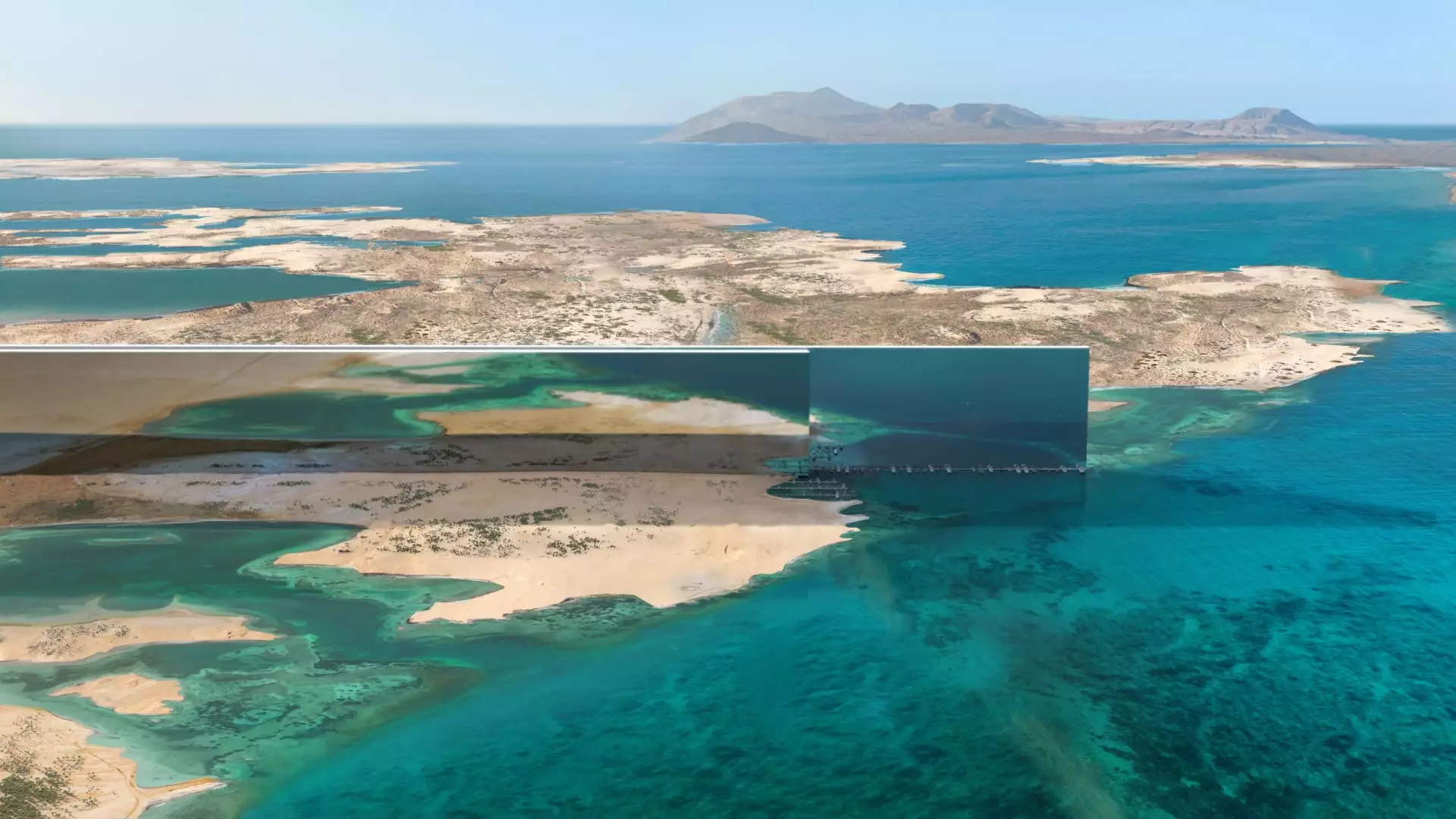For years, Saudi Arabia has projected its ambitions to transform the desert into a utopian panorama of cutting-edge technology and lavish living. At the heart of this audacious plan is Neom, a sprawling development that promises to redefine urban living through its flagship project, The Line. Originally envisioned as a 105-mile, frictionless metropolis nestled between colossal glass skyscrapers, The Line embodies an almost messianic faith in technological prowess. Underneath this veneer of resilience, however, lies a fragile ecosystem increasingly vulnerable to the financial and technical realities that threaten to derail the entire enterprise.
Central to its blueprint was the idea of a smart city that would operate on the forefront of innovation—no cars, no roads, high-speed trains, and minimal environmental footprint. Yet, the dream of an uninterrupted, utopian megastructure amid the sands fast appears to be mired in doubts. The recent reconsideration of its feasibility—prompted by Saudi Arabia’s sovereign wealth fund—is a stark acknowledgment: The backbone of this vision is built on sand, not solid ground. What was once a glowing symbol of Saudi modernization now reveals itself as an overambitious fantasy, perhaps too exaggerated and disconnected from economic realities to ever truly materialize.
The Key Challenges: Economics and Technology in the Crosshairs
The primary hurdle confronting Neom is its exorbitant cost—estimated at a staggering $1.5 trillion. Such an astronomical figure, paired with the kingdom’s waning oil revenues, raises fundamental questions about sustainability. Oil, the lifeblood of Saudi Arabia’s economy, has faced persistent volatility, with prices plummeting below $70 per barrel. This decline exposes a fundamental flaw in the project’s financial underpinning: Its hefty price tag depends heavily on sustained high oil prices, which are now less reliable than ever.
Furthermore, technological feasibility remains an uncharted territory. Advocates tout The Line as a marvel of engineering, promising high-tech solutions that seem ahead of current capabilities. But sceptics argue that the implementation of those high-speed rail systems, vertical skyscraper cities, and sustainable infrastructures may be more aspirational than realistic. Are the digital innovations promised truly achievable within budget and timeframe? The evidence suggests otherwise. History has shown that large-scale infrastructure projects—especially those fueled by visionary tech—often suffer from overpromising and underdelivering, turning dreams into staggering disappointments.
The reassessment of The Line’s viability implies that many of its intended features—like barrierless city living and ultra-efficient transportation—might be scaled back or delayed. This isn’t just a technical challenge; it’s a betrayal of the original hype, which was constructed on a myth of limitless innovation. The reality of crunching costs and incomplete technology casts shadows over the entire futuristic narrative, forcing regional officials to ask whether such a project is worth the financial and political risks.
Trust and Leadership: Consequences of Overconfidence
A deeper issue plaguing Neom is leadership complacency and a dangerously naive optimism promoted by consultants seeking to preserve their status. Behind closed doors, critics speak of a “yes-man” mentality—where projections are overinflated to maintain momentum and investment, despite mounting signs of faltering fundamentals. This cultural flaw in the project’s management raises questions about accountability; a transparency deficit that could sink a project of this magnitude.
The trust deficit isn’t limited to internal mismanagement. When public and private stakeholders are repeatedly fed overly optimistic forecasts, the eventual reality damages Saudi Arabia’s global credibility. Leaders need to accept that groundbreaking visions require honest appraisals, not blind faith or sugar-coated promises. The political gamble of hyping a project that may ultimately fall short is perilous; it risks fostering investor fatigue, societal disillusionment, and diplomatic embarrassment.
Despite admiration for The Line’s boldness, experts anticipate that inevitable compromises will be made. Budget constraints and technical hurdles suggest a future where the original grand ambitions are downsized significantly. Historical precedent indicates that scaling back after initial grand declarations can be a bitter pill to swallow, especially when the project has been painted as a national symbol of modernity and progress.
Reassessing Future Prospects in a Changing Global Climate
The palpable shift in Saudi Arabia’s economic landscape underscores a maturity that is long overdue. Once driven by an almost reckless pursuit of diversification through vast infrastructure, recent developments suggest a more cautious approach. Instead of doubling down on overambitious ventures, the kingdom appears to be recalibrating—proceeding with pragmatism, prioritizing economic stability over headline-grabbing spectacles.
This pragmatic turn may be painful, especially for a regime eager to showcase technological prowess. But it might also be the only sensible course—recognizing that without a solid economic base, such megaprojects risk becoming expensive white elephants. The world’s experience with megastructures—be they urban, industrial, or technological—reminds us that visionary dreams often crumble under the weight of practical limitations. It’s better, perhaps, to build smaller, smarter, and more achievable projects that yield tangible results rather than building an empire of illusions.
In the final analysis, the fate of Neom and The Line hinges on whether Saudi Arabia can transition from hype to realism. If the kingdom embraces transparency, moderates its ambitions, and manages its expectations wisely, it may salvage its reputation for bold innovation. But if it persists in clinging to grandiose fantasies unsupported by economical and technological truths, the project’s collapse could serve as a cautionary tale—a stark reminder of the dangers inherent in overpromising and underdelivering on visionary national ambitions.


Leave a Reply